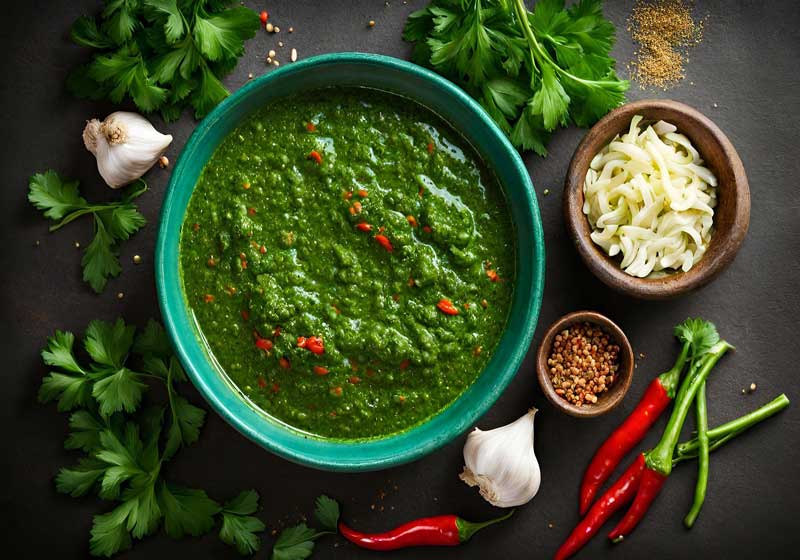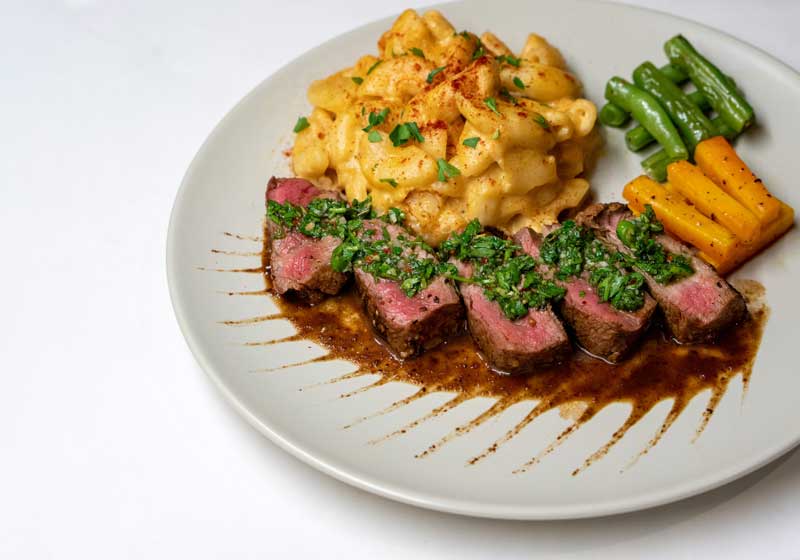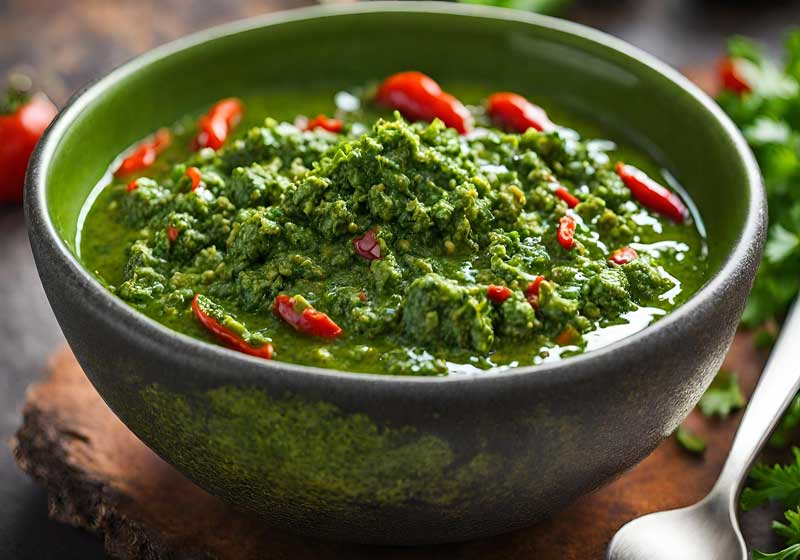A vibrant, herbaceous condiment with bold Argentine roots, chimichurri is a staple of South American cuisine that’s rapidly winning hearts in kitchens across Australia.
Known for its punchy flavour and versatility, chimichurri is traditionally served with grilled meat, but its uses extend far beyond the barbeque.
Chimichurri typically comes in two varieties - green (chimichurri verde) and red (chimichurri rojo). The green version is the most common, made with finely chopped fresh parsley, garlic, oregano, red wine vinegar, olive oil and a touch of chilli for heat.

Red chimichurri includes the same base but adds paprika, capsicum and sometimes tomato to deepen the flavour and colour.
At its core, chimichurri is a raw sauce - no cooking required - which makes it incredibly quick to prepare and full of fresh, bright flavours. The key to an excellent chimichurri lies in balancing acidity, heat and herbaceousness.
Fresh parsley is non-negotiable, but some versions incorporate coriander, basil or mint. While garlic gives it bite, vinegar adds the essential tang that cuts through fatty meat.
In Argentina and Uruguay, chimichurri is traditionally spooned over grilled beef, particularly asado - South America’s beloved method of slow-cooking meat over open flames. The sauce enhances the natural umami of steak while providing a fresh contrast to its richness.

However, chimichurri is equally at home with grilled lamb chops, roast chicken, pork belly or even seafood like prawns and white fish.
Australians are increasingly embracing chimichurri for its ability to elevate everyday meals. Drizzle it over roasted vegetables, use it as a marinade for tofu, or swirl it through mayonnaise for a zesty sandwich spread.
Stir a spoonful into scrambled eggs, add it to grain bowls, or use it as a salad dressing base - it’s incredibly adaptable.
To make chimichurri at home, simply mix chopped herbs, garlic, vinegar and olive oil by hand for a rustic texture. For a smoother version, pulse the ingredients in a food processor, but be careful not to over-blend - chimichurri should retain some texture. Let it sit for at least 30 minutes before serving to allow the flavours to meld.

Whether you're planning an Aussie backyard barbeque or simply looking to add global flair to weeknight dinners, chimichurri brings freshness, spice and complexity with very little effort.
It’s proof that a few simple ingredients, when balanced just right, can become something truly extraordinary.







